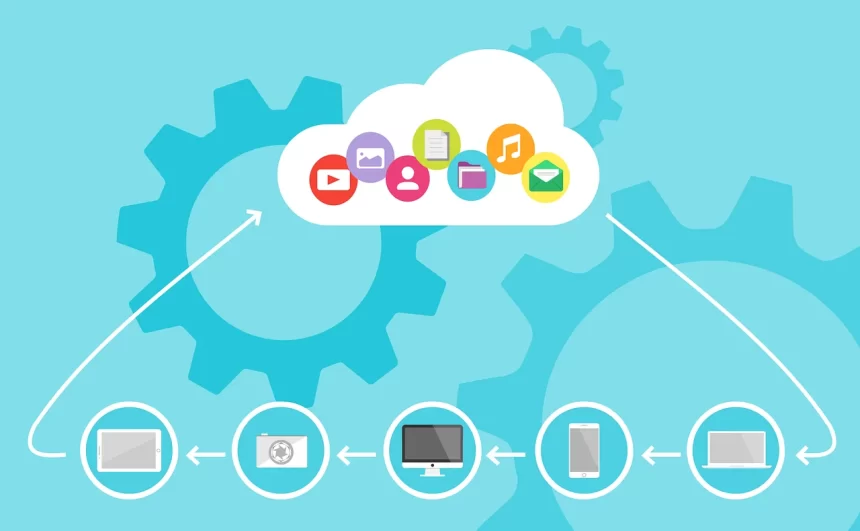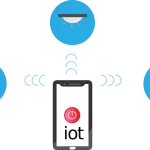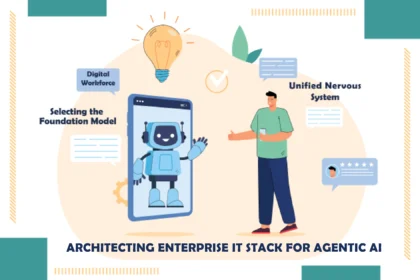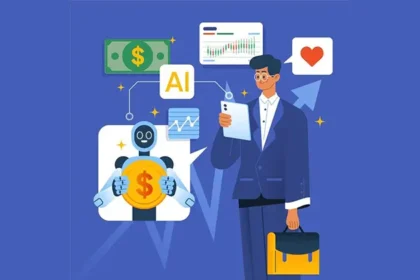Cloud computing has been as crucial to the data environment as it is to the lives of consumers. Its potential to collaborate exemplifies a big data environment’s remote interactivity moving towards the edge, perhaps inexorably. During the coronavirus pandemic, cloud computing has helped the global economy, worldwide supply chains, and remote employees. It will continue to be a fundamental goal for businesses seeking improved scalability, business continuity, and cost-efficiency in 2021. According to Cisco’s report, the world’s leading cloud data centers will manage 94% of the world’s workloads. However, IDC showed that the 5-year CAGR for IaaS would increase by 33.7% as of late. In this article, we will discuss about the cloud computing trends for 2021.
Here are top cloud computing trends for 2021
- Hybrid Cloud Computing to conquer 2021
As of now, various companies use the hybrid cloud computing system to manage their production and workflow. Numerous specialists agree that different businesses will take on hybrid cloud computing by 2021. Ideal speed, remarkable control, and enhanced security are the key points of interest one can expect to get from hybrid cloud computing.
- Serverless Computing
Serverless computing has seen an escalation in popularity as a comprehensive improvement. This is due to the growing need for conventional innovation to go serverless. It reallocates the whole foundation by separating the start and end apart from the application.. For example, serverless models that have an ordinary structure are the pay as you go framework. These initiatives are versatile and allow businesses to have more control over their cloud hosting expenses.
- The Edge
The enterprise utility (and mounting use cases) of Multi-cloud reflects the emerging distribution of the data landscape. This trend is increased by the fluctuating levels of isolation ascribed to the existing public health environment. And the feasibility of edge computing on the fringe of the cloud. The need to connect them is virtually enhanced by increasingly heterogeneous circumstances, which is the place where multi-cloud deployments thrive.
- FaaS Implementation in Cloud
A key sub-part of the cloud computing service is FaaS (also known as Function as a Service). It underpins the use of code by an engineer while retaining a strategic distance from complicated infrastructure adoption. FaaS is part of serverless computing and focuses mainly on gateways, storage, API, and competitions. These are service types for FaaS. It allows the developer to save time on coding as a simplified aid instead of its IaaS and DaaS partners. Perplexed codes can be generated faster with FaaS. More technology goliaths will choose FaaS as a method for their standard work by 2021. FaaS may experience a business expansion of almost USD7.72 million, as indicated by a study by Cision. The annual growth rate would, therefore, reach up to 32.7%. Fast implementation in the cloud is expected to be in massive demand as cloud computing trends for 2021.
- Hyper-scale Data Centers
In the modern era, companies have been forced to operate at a boisterous speed by instant consumption. They require their IT frameworks to deliver services at a rate compared to any conventional structure. They will need an IT infrastructure that can scale up to supply increased demand at a rapid movement. In the digital age, this requirement for business is causing the need for hyper-scale data centers. To adapt to an increasingly high demand, the hyper-scale data center will scale dramatically and rapidly. They assessed that the hyper-scale server data center market would grow to a CAGR of 26.32% between 2017-22 in a research report by Markets&Markets. This cloud computing trend for 2021 will rise.
- Joined services of Cloud Computing, Big Data, and IoT
As it combines with Big Data and IoT, cloud computing will boost in 2021. Without a doubt, the significant tech goliaths will join the consolidated services, making it a trend. Big Data and IoT are both continuing developments, and a few enterprises are running on their assistance. Big Data offers data after it is processed and evaluated that is associated with a particular organization. IoT is where production can be made of physical devices with legitimate interconnection. According to preferences, if cloud computing converges with big data and IoT, an enterprise may enhance its efficiency. Organizations will gain access to their competitors’ vital data and put more time into deciding on better business decisions for what’s to come.
- Automated Cloud Orchestration and Optimization
The multifaceted nature of managing both the quality and quantity of integrated resources through applications overwhelms even the savviest of IT companies. Cloud platforms will continue to enable automated cloud orchestration and optimizing. One of the critical components of choosing a cloud provider in 2021 must be automated service and performance management. Enterprises will need to deal with a hundred or more services from a single cloud provider. This cloud computing trends for 2021 is here to stay.
- Disaster Recovery Services
As an ever-growing number of businesses take the digital route, the cost of downtime is increasingly expanding. Gartner reported that the usual price of IT downtime is nearly $5,600 per minute. For example, downtime in e-commerce firms means botched sales opportunities. Then again, businesses are driven, for instance, by GDPR, to treat consumer data with care. After all, companies should be legitimate in terms of their disaster recovery plans. Therefore, businesses today are increasingly moving towards DR-as-a-Service, which is a strategy that can minimize recovery time altogether.










